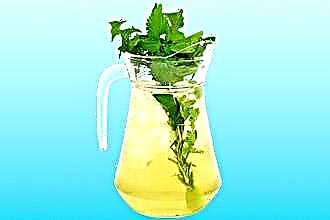The characteristic symptoms of sinusitis are nasal congestion, toothache and headache, fever, sinus discharge with or without pus. This disease is unpleasant and dangerous, requiring a serious attitude towards oneself and timely treatment. Some traditional healers advise to take a steam bath and take less medicine. Is it correct? Is it possible to go to the bathhouse with sinusitis? Let's consider this issue in more detail.
When can you visit the steam room
 A bath with sinusitis can both be beneficial and seriously harm. Therefore, before going to the sauna with friends, you should consult your doctor.
A bath with sinusitis can both be beneficial and seriously harm. Therefore, before going to the sauna with friends, you should consult your doctor.
When deciding for yourself whether it is possible to go to the bathhouse with sinusitis, you need to know exactly at what stage of development the ailment is, and the causative agent of the disease.
Steam with sinusitis is prohibited in such cases:
- Acute stage of the disease. Steaming is strictly prohibited at this stage. In the presence of pus in the sinuses, a high temperature can provoke a significant increase in the volume of mucus produced, which, expanding, presses heavily on the sinus walls, causing severe pain in the forehead and nose. In addition, with a severe form of the disease, a breakthrough of exudate in the tissue of neighboring organs is possible with the development of severe complications - phlegmons, abscesses, meningitis, sepsis.
- Bleeding tendency. In some people, the walls of blood vessels are thin and fragile, prone to rupture. The increased air temperature in the sauna increases blood circulation throughout the body, blood vessels and capillaries increase, which can lead to bleeding that cannot be easily stopped.
- Taking antibiotics. While taking a course of antibiotics and some time after it ends, the human body is weakened by the action of strong drugs. Overheating can cause malfunction of various internal systems.
- The presence of any inflammatory processes in the human body, problems with the cardiovascular system. Also contraindications include diabetes mellitus, kidney disease and any chronic diseases in the acute stage.
- Feeling unwell. The presence of increased body temperature, weakness and malaise, symptoms of intoxication. In this case, even not in the acute stage of sinusitis, in order to avoid heatstroke, it is better to stay at home, and you can take a steam bath in a couple of days.
At the same time, the steam room is not only allowed, but is also very useful in the initial stage of the disease, as well as at the stage of recovery for the elimination of residual effects, regeneration and cleansing of mucous membranes. High temperature has a detrimental effect on microbes and stimulates metabolic processes.
A trip to the bathhouse can be compared to a large inhalation, in which a healing moment  spreads to the whole body.
spreads to the whole body.
The positive effect of visiting the steam room is as follows:
- normalization of blood microcirculation;
- increasing the body's defenses;
- dilution of the secretion and improvement of its outflow from the maxillary cavities;
- elimination of toxins released by bacteria.
Of course, a person with sinusitis going to the bath should know when to stop so that the benefits do not turn into harm.
Bath rules
Answering the question whether it is possible to steam with sinusitis, you need to pay attention to some nuances that should be taken into account when visiting a steam room:
- The patient's nasal breathing in the bath should be calm and deep so that hot air gets through the nasal cavity into the paranasal sinuses.
- Fever should be given a little, paying attention to the body's reaction to changes in air temperature. You need to understand that being in the bath should be a pleasure, not a heavy duty.
- When vaping, it is recommended to drink plenty of warm liquid, preferably herbal tea.
- Acceptance of alcoholic beverages of any strength is excluded.
- The length of stay in the sauna depends on the patient's condition, but it is better to start from 15-20 minutes, gradually increasing the duration with a positive reaction of the body.
- If negative manifestations appear (nausea, weakness, dizziness), you must immediately interrupt the procedure, go to the dressing room and take a horizontal position and drink plenty of fluids.
Particular attention to behavior after the end of the procedure. The body should be cooled gradually, it is best to sit in the dressing room and drink tea. You can go out into the fresh air only after complete drying and cooling. If the weather is cold outside and it's far from home, you should call a taxi. When you return home, it is helpful to lie under the covers and drink warm tea.
Bath recipes
In addition to the simple effect of hot air, in the bath you can also use inhalations with medicinal herbs, medicinal ointments and phytoapplications. Experienced bath attendants suffering from chronic sinusitis use them after hypothermia in order to prevent the transition of the disease into an acute form, they are also good in the recovery period.
 Proven herbal recipes that are good for watering the stove while steaming:
Proven herbal recipes that are good for watering the stove while steaming:
- Mix plantain, lavender, coltsfoot, St. John's wort in equal proportions. Brew two tablespoons of the mixture, leave for an hour and strain. Pour the resulting infusion onto the stove and inhale the aroma deeply. Also, many people like to spread dry herbs on the stove, which is also useful.
- Pharmacy products help well. In a liter of water, you can drop 5-6 drops of essential oils of juniper, eucalyptus, fir, pine or mint, add the resulting mixture in small amounts to the stove. You should be careful with oil solutions, as with their individual intolerance, asthma attacks are possible.
- Insist 10 grams of dried grass, chamomile flowers, St. John's wort in one and a half liters of water, use as a general inhalation.
- Mix 10 grams of lemongrass, yarrow and lemon balm, add one liter of water and brew. Then heat in a water bath for 15 minutes and drain. Use by analogy with previous recipes.
Traditional medicine experts advise you to prepare your own ointments and use them as masks:
- A gruel of 3-4 cloves of garlic, passed through a garlic, in a steam room, spread on the face in the projection of the affected paranasal sinuses - under the eyes on the sides of the nose. Keep for 10-15 minutes, then rinse thoroughly with warm water. Garlic has pronounced warming and antimicrobial properties.
- 4 parts of horsetail and juniper grass, 3 parts of thyme, elecampane flowers and leaves, birch leaves and wormwood, 5 parts of chamomile and marsh creeper, 6 parts of black currant leaves and 2 parts of sweet clover grass, mix thoroughly. Pour the mixture with hot water for half an hour, then drain through a colander and squeeze out the excess liquid. This application needs to be prepared at home, and heated in the sauna to 37-42 degrees. The application is applied to the maxillary sinuses and nose, covered with a towel. You need to keep it for 15 minutes, after which it is advisable to lie down for 2-3 hours.
Ointments can be spread on the inside of the nostrils or injected into the nose using gauze turundas:
- Mix onions, callanchoe and aloe juice, honey and Vishnevsky's ointment, moisten turundas with the resulting ointment and introduce them into the nasal passages. Then enter the steam room and keep the turundas there for 15 minutes, and then remove.

- Ointment of 50 grams of olive oil, 200 grams of spruce resin, 15 grams of copper sulphate and chopped onion to lubricate the nasal passages after the bath.
- Mix equal parts of laundry soap, milk, butter and onion juice, heat in a water bath and add honey. Insert the moistened cotton swabs into the nostrils for 10 minutes, after the end of the procedure, blow your nose thoroughly.
Is it possible to float legs with sinusitis
If it is not possible to visit the sauna, many people replace it by warming up their feet in a basin of hot water. This is a convenient option, but the effect of this procedure cannot be compared with a steam room. The main difference is that heat does not directly affect the accessory cavities of the nose, therefore, most likely, there will be no special harm or benefit with sinusitis.
Another thing is that for most colds, thermal procedures are generally useful. Adepts of folk therapy argue the benefits of the procedure by the presence of a significant number of nerve endings in the feet, the thermal stimulation of which contributes to the healing of all body systems. Proponents of traditional treatment argue that there is no particular benefit in thermal exposure to water, but if the patient feels better from this, then you can try.
The only remark: at a body temperature above 37.5 degrees, it is undesirable to float the legs of a patient with sinusitis in order to avoid deterioration of the condition.



